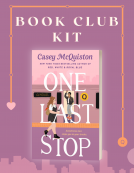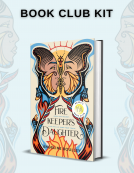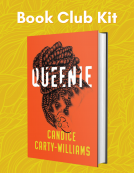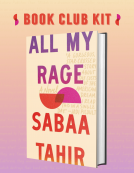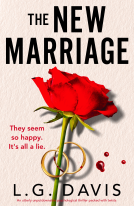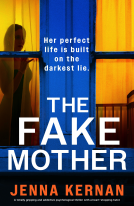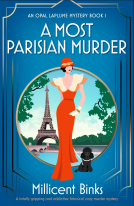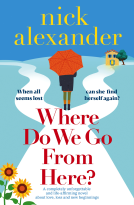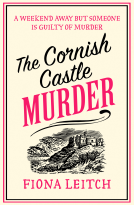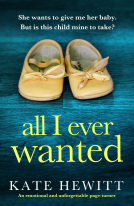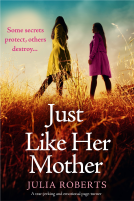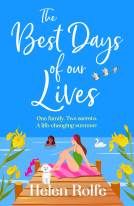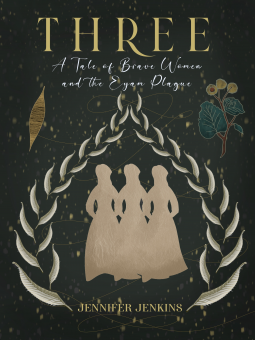
Three
A Tale of Brave Women and the Eyam Plague
by Jennifer Jenkins
This title was previously available on NetGalley and is now archived.
Send NetGalley books directly to your Kindle or Kindle app
1
To read on a Kindle or Kindle app, please add kindle@netgalley.com as an approved email address to receive files in your Amazon account. Click here for step-by-step instructions.
2
Also find your Kindle email address within your Amazon account, and enter it here.
Pub Date May 05 2021 | Archive Date Oct 30 2021
Talking about this book? Use #Three #NetGalley. More hashtag tips!
Description
In 1665 a box from London brought more than cloth from plague-ridden London to the quiet village of Eyam in Derbyshire. For the next year the villagers had to learn to live with a silent enemy.
Three tells the story of three very different women in their courageous attempts to keep themselves and their loved ones alive as Eyam closed its doors to the outside world, instead facing the malevolent danger alone. Emmott Syddall, Catherine Mompesson and Elizabeth Hancock were each determined to live and the courage each of them found was as unique as the women themselves. Will 1666 bring salvation?
This work of historical fiction, written during a pandemic whilst reflecting on another, fuses creative imagining with historical fact to bring three female protagonists to life.
Available Editions
| EDITION | Paperback |
| ISBN | 9798748183246 |
| PRICE | £11.00 (GBP) |
Featured Reviews
In a Nutshell: If you want to know what happened in Eyam during the plague and how the citizens rallied together in those hard times, this is a great option. However, if you expect a well-structured and well-written book, you might end up disappointed. (‘might’ is the key word here.)
Keeping a safe distance from others, staying at home as far as possible, dealing with deaths of family members while still surviving for the sake of those alive, understanding the importance of hygiene, the hope that the new year would bring a fresh start, the disappointment at some people profiteering from others’ struggles, simply living in hope day by day, growing closer to God, going farther from God,… all are aspects that are familiar to us since the last eighteen odd months. But we have been lucky in two ways: 1. Science is advanced enough to tell us the behaviour of viruses, and 2. Technology is advanced enough to help us keep in tough not just with near and dear ones but also to stay abreast of the latest news. Imagine going through a similar pandemic in the 17th century. This book shows you how life would have been under a viral scourge in that era.
Story:
Eyam (pronounced 'eem') is a small rural village in the county of Derbyshire. In 1665, a tailor’s assistant from this village received a bundle of cloth from London. Unfortunately, London was already heavily plague-afflicted at that time, and this material, unknown to anyone, was contaminated with infected fleas. When the assistant hung out the damp cloth to dry, he got afflicted with the disease and became the first Eyam resident to die. This was just the beginning of the ordeal in Eyam of what we now know as the Bubonic Plague, or the Black Death. Over the next fourteen months, at least 260 villagers died from the deadly disease. Many families were completely wiped out, while many others had just a single survivor. Of those who contracted the disease, all except two died. In the face of this human devastation, the two rectors of the village took a brave decision: they closed off the borders of the village so that no one could enter or exit it, thereby stopping the “plague seeds” from spreading to neighbouring villages and saving them from peril.
Three women who lived in the village during this scary period were twenty three year old Emmott Syddall (engaged, soon to be married; dutiful, loyal and loving), twenty seven year old Catherine Mompesson (wife of the village rector; delicate in health but strong in her faith), and Elizabeth Hancock (staying on the outskirts of the village with her husband and six children; considers her distance from the village a blessing; practical and hardworking.) We see the impact of the plague mainly from the third-person perspectives of these three women.
I wasn’t aware of the history of Eyam, though I have read about the ghastly plague that killed so many in England. This story turned out to be really hard on my feelings. To constantly see people dying left, right and centre put me on the verge of an emotional breakdown. I was initially upset with the author at killing off so many characters pitilessly, but during my post-reading research on the actual events, I found out that the three principle women (and the rest of the characters, every single one of them) were actual residents of Eyam, and the author had been faithful in her research and factual in her death toll. That depressed me even more. That all those horrendous events had actually happened was devastating to learn.
The three main female characters are intriguing. Each of them has a distinct personality and a distinct lesson to teach us. Their fears, their strength, their grief, their uncertainties…all were portrayed beautifully. I don’t know if I can call them “inspirational”; to me, they were just ordinary women caught in extraordinary circumstances, and they faced their situations the best way they could. My favourite of them was Elizabeth Hancock. Oh God! I wish I could tell you her story, but I won’t as I don’t want to give out spoilers. (Of course, her story is available online too, if you are really curious.) But the way she handled whatever she had to handle, I haven’t sobbed so much during any scene in any book, ever! (And I’m not even a habitual crier while reading!) She is one of the bravest women I’ve read about.
I was amazed by the parallels in the human situation under the viral scourge between the 17th century plague and the 21st century covid-19 pandemic. So many of the circumstances seem to overlap and there were times when I forgot the era and wondered why they weren’t wearing a mask before stepping out. The main difference lay in the invocations to God for help. The 1660s was an era where science was still learning how to handle viruses and religion dominated human thinking. And that shows in the way the villagers used biblical verses and their faith to pray for a better and safer future, and the trust they had in their rectors’ decision of “cordon sanitaire”, the self-quarantined lockdown of the village. In fact, this would work great as a Christian fiction. (There is a sex scene between a married couple but it is pretty mild, and not at all explicit. It is written more to depict the emotional upheaval of the characters than physical passions.)
As I said at the start, if you just want to know more about the plague through a fictionalised version of the facts, this would be a wonderful book. However, in terms of its writing, the book left me quite dissatisfied. I think (though I am not sure) that this is a debut indie work. And that shows in the writing style. There is a fair bit of repeated content and a constant cross-referencing to the previous deaths, all of which make the content tedious. (The almost 450 pages of death and grief doesn’t help matters.) Add to this the fact that we see the same events from three perspectives, and this too adds to the repetition. The editing really need to be a lot tighter, and proof-reading stricter.
Furthermore, the number of deaths becomes too much to take in after a point. (Sorry, I know this sounds like a really silly thing to say because these people actually died and it is a book about the plague after all. But there were so many names being mentioned again and again in the death toll that it became saturating after some chapters.)
Finally, (and this point isn’t the author’s fault), there are many repeated names in the book, the most frequent of which was Elizabeth. Emmott's mother is Elizabeth. One of Emmott's sisters is also Elizabeth. Catherine's daughter is Elizabeth. Not to forget Elizabeth Hancock, the third narrative voice of the book. And a couple more Elizabeths in the village. There are also multiple versions of John, William, Catherine, Richard and so on. I'm not sure if people in the 17th century had only a limited stock of Biblical/royal names that they keep reusing, but as a 21st century reader, it sure was confusing to follow. I was very grateful to be reading this on Kindle as the search button proved invaluable in keeping track of who was who. Of course, these are all actual names of the villagers from that time so the author shouldn’t be censured for this overlap in names.
All in all, the research in the book was immaculate and praiseworthy. But the graphic and repeated depictions of death become very intense to take in. (especially as there are many young children who were victims too.) I might have felt differently if we were still in the good old days (circa 2019), but reading this book during a global pandemic results in very personal and severe emotions. I love the book for the information and insight it provided to me, but I really wish the writing were crisper.
3.5 stars from me, rounding up to 4 for the mind-blowing research and the genuine efforts to bring this story to us as authentically as possible.
My thanks to Cameron Publicity & Marketing Ltd and NetGalley for the ARC of the book in exchange for an honest review.
 Leanne N, Educator
Leanne N, Educator
I was asked to write an honest review in exchange for a copy of Three. As it is based on historical events of the devastation of a tiny village during the 1665-6 plague, I was expecting a very intense depiction. It took me a good 60 pages before I could begin to actively engage with the characters as I felt it was a little slow and long-winded in building the daily life of the village However, the novel soon turned into a veritable page-turner as the infection touched every member of the village, pathos for each building through their determination, grit and unbearable grief, which could be synonymous with the selflessness of front line workers in our present-day pandemic.
Three: A Tale of Brave Women and the Eyam Plague
by Jennifer Jenkins
Quote:
The villagers were staying at home until the "deadly stalker hung up its cloak and scythe and left".
Synopsis:
"In 1665 a box from London brought more than cloth from plague-ridden London to the quiet village of Eyam in Derbyshire. For the next year the villagers had to learn to live with a silent enemy. Three tells the story of three very different women in their courageous attempts to keep themselves and their loved ones alive as Eyam closed its doors to the outside world, instead facing the malevolent danger alone. Emmott Syddall, Catherine Mompesson and Elizabeth Hancock were each determined to live and the courage each of them found was as unique as the women themselves. Will 1666 bring salvation?"
Review:
Based on actual events, Three is an extremely well-researched and beautifully written story of love, loss and family. Any book dealing with a plague will be heartbreaking and this book definitely does not disappoint. So many people perished in the small village of Eyam during 1665-66. Sometimes entire families died within days, or even hours, of each other. The plague is told through the eyes of three courageous women. Highly recommended.
I was gifted this advance copy by NetGalley and was under no obligation to provide a review.
 Reviewer 823951
Reviewer 823951
Despite the low reviews I really enjoyed this book. In 1665 a box from London brought more than cloth from plague-ridden London to the quiet village of Eyam in Derbyshire. For the next year the villagers had to learn to live with a silent enemy.
Three tells the story of three very different women in their courageous attempts to keep themselves and their loved ones alive as Eyam closed its doors to the outside world, instead facing the malevolent danger alone. Emmott Syddall, Catherine Mompesson and Elizabeth Hancock were each determined to live and the courage each of them found was as unique as the women themselves. Will 1666 bring salvation?
This work of historical fiction, written during a pandemic whilst reflecting on another, fuses creative imagining with historical fact to bring three female protagonists to life. Great storytelling!

